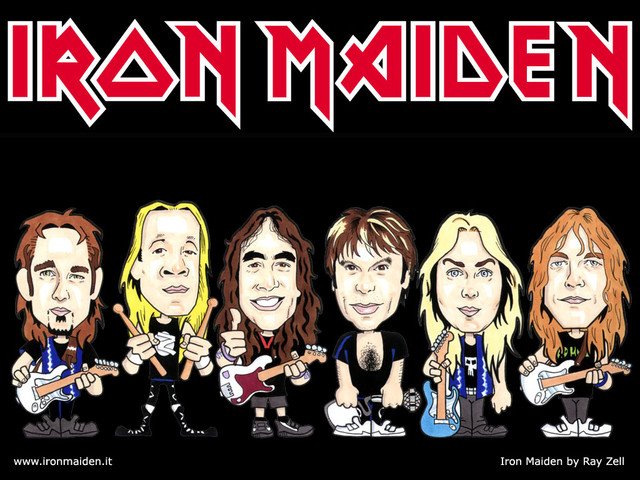Mark Morton of
Heavy Metal Examiner recently conducted an interview with
IRON MAIDEN drummer
Nicko McBrain. An excerpt from the chat follows below.
Heavy Metal Examiner: Was there an extensive group discussion about participating in the [
"Flight 666"] movie, or was it an executive decision from
Rod Smallwood [manager] saying that you had to do it?
Nicko: No, no, no, Lord almighty. There were many, many discussions. It kicked off one night after a show in Europe. We were talking amongst the band — we do talk to each other, contrary to popular belief.
Bruce [
Dickinson, vocals] came up with the idea about getting our own jet airliner and touring around the world.
We discussed the places we've never been to, places we wanted to go to, how much money it costs to tour these places, and how cost-prohibitive these places were. And
Bruce said, "Well, we'll have our own magic carpet!" Then we started thinking that that might be a great idea; we could get a 747! And
Bruce said that he was thinking more along the lines of a 757, because he wasn't rated for the 747. Then we pitched it to
Rod, and discussed the logistics of where we wanted to go. And originally, the idea for taking the 757 was so we could take all our gear, have
Bruce pilot it, and bring all of our family along. Then someone said, "Well, we have to take all the journalists of the world with us, too, because this is an historic event!"
"Hhhhhmmmm," said
Rod, "why don't we document this here bloody trip. It is historic, after all. Nobody's ever done this before — customize a 757 and whatnot. Even better, we should have a documentary crew 24/7 for the duration of the tour!" Boy, that's when it went down like a fountain in a 2-man submarine, believe me. There was a bit of rumbling, a bit of grumbling, some trepidation…my lord, trepidation! So yeah, it wasn't a matter of "yeah, let's all do it."
There were a few of us who weren't very happy with the idea of these people coming and living with us for two months, with access to us 24/7. There were a couple of meetings we had where we ended up convinced that it was the best thing to do, because it was so historic. And to be very honest with you, I'm glad we did it, because we came out with this wonderful
"Flight 666" movie.
And I have to take my hat off to
Rod Smallwood, because he oversaw the running of how the film was presented, chronologically. He did a fantastic job editing that film with
Scot McFadyen and
Sam Dunn. But yeah, we had a bit of a problem with agreeing to give these guys access to us, but through the love-hate relationship, we came out with more love than hate. And I'm pleased to say that
Scot and
Sam and all the crew are now very much a part of the
IRON MAIDEN family.
Heavy Metal Examiner: Obviously, there had to be a period of adjustment with these guys in your faces all the time. Were there any eruptions or rows that developed out of this, off camera?
Nicko: Not really, no. There were moments where I'm sure they got some growling and grumblings on film somewhere; especially from me… 'cause I told them to f*** off more than once. Me, moreso than anyone else in the band. Yeah,
Janick [
Gers, guitar] used to tell them to just p*** off and whatever. The one thing I have to say is that they went above the
call of duty
when they were recording the concert footage for the movie. They would come up to me about an hour before the show, and
Sam would say, "Hey
Nick, we'd like to shoot you tonight from this side of the stage. Are you okay with that?" And I would go, "F*** yeah, of course you can!" It was always a "whatever you want" kinda vibe, and they never stepped on anyone's toes.
And that is one of the hardest things to do — film
IRON MAIDEN live. If someone comes up to the front with a camera, and
Bruce is there, he'll put a boot in it. During
Rock In Rio, I'm not sure if you can see it, but at one point, there was a camera pointed down at me, and he climbed up this ladder and ripped it right out — $30,000 worth of camera, just gone! But no, we didn't really have any problems with them. If we weren't happy about something, they wouldn't tape or overstep the line.
Read the entire interview from
Heavy Metal Examiner.










